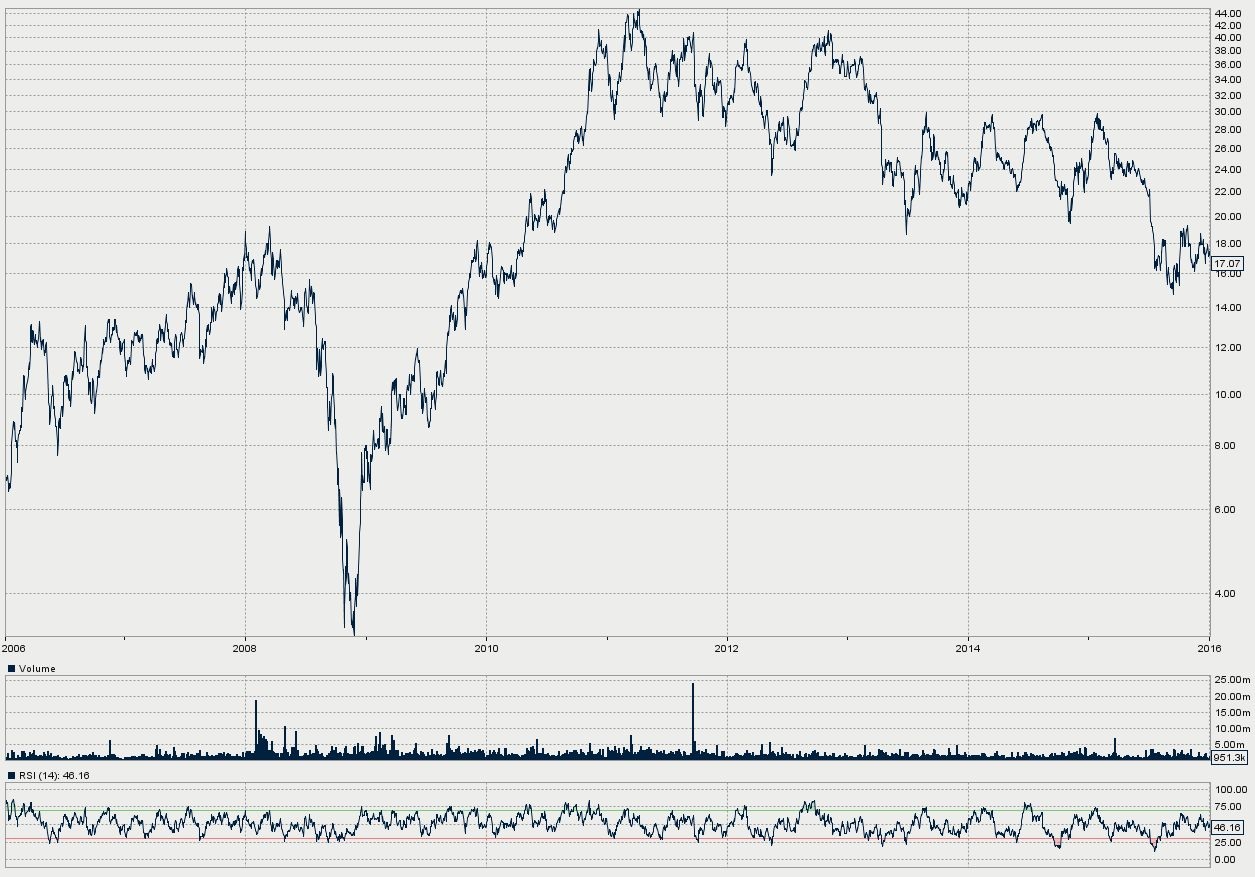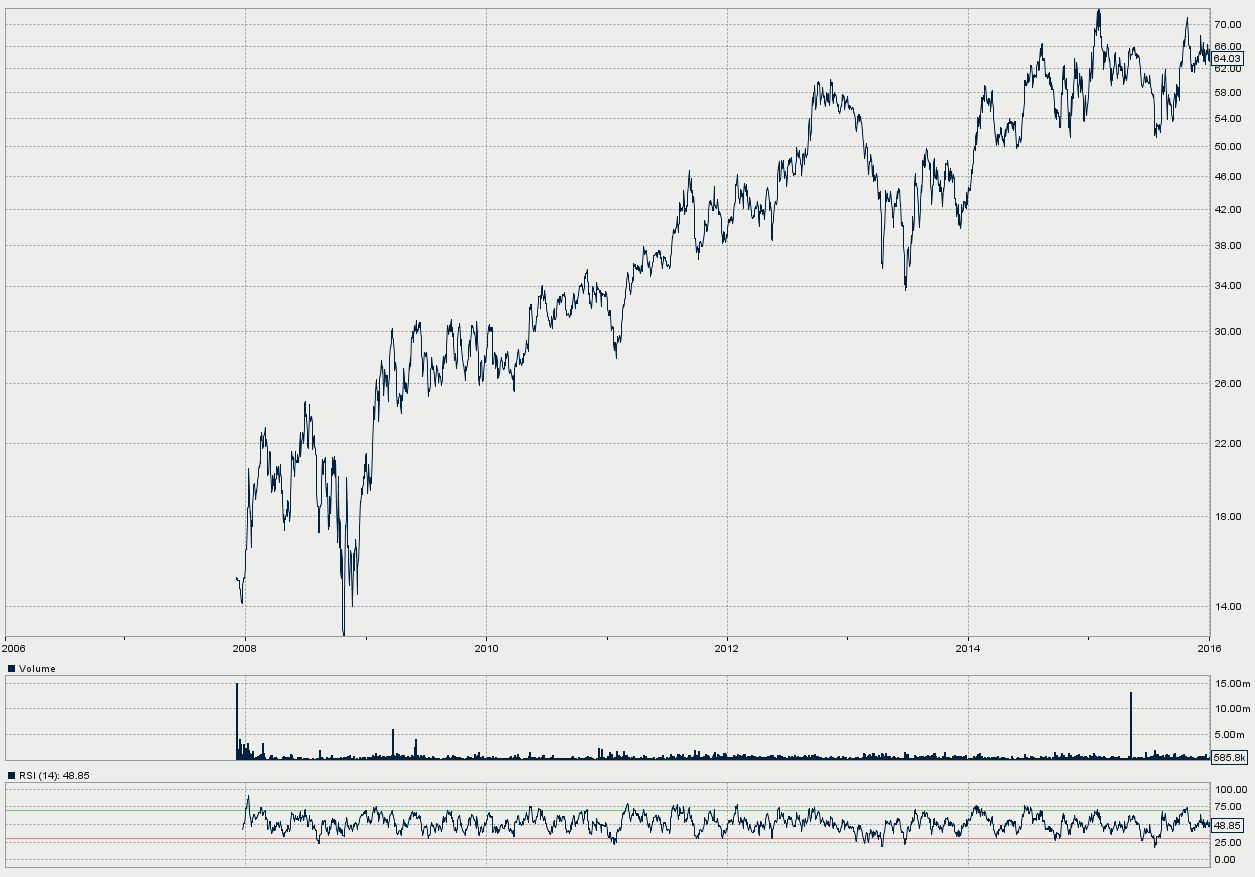Are these companies the safest way to play the mining sector?

Mine Streamers: scooping off the cream – or has it gone sour?
Last month I promised I would discuss streaming companies (and their siblings, royalty buyers). The genre is little known in the UK and only commenced in 2004 in Canada, with a large investment sector built up since then still concentrated there, and to a lesser extent in Australia. On the LSE the only such company is Anglo Pacific (APF) but because more and more miners are having to rely on the sector for at least part (and in some cases, all) of their funding (as I described for Lydian last month), I feel investors should take more notice – if only for the reasons mentioned.
Streaming companies can protect themselves much more effectively from operating problems, and to some extent from fluctuating commodity prices, than can traditional miners. At the same time, they can also give investors geared-up exposure to rising commodity prices, and to any exploration success. Last but not least, they are delivering the generous dividends that many smaller miners do not and that even the larger ones are now on the point of reducing.
On top of the aforementioned built-in advantages, streamers’ growing influence in the absence of other funding, and their use in sheltering a client from a need for diluting his equity to obtain those funds, means that streamers can make profitable deals. As I described last month for Lydian, the converse of the above-normal project loan interest rate it has to pay for the streaming part of its funding is that the streamer makes that same above-average rate of return. Nice when you can get it, as they increasingly can.
What’s to lose? Streamers can’t of course have things both ways. Although they start off well protected (most deals are based on paying only between 20% and 30% of the prevailing commodity price for the ‘stream’ as it is delivered – so that their product ‘cash cost’ provides a very large profit margin when re-sold to recoup their loan) any price reduction will reduce the absolute value of that margin. After substantially exceeding the performance of both miners and commodity prices from their birth in the mid-2000s, up to their heyday round about 2013, the major streamers’ shares have come well off their highs as falling commodity prices have cut into their re-selling margins. After that hiatus, however, deal expansion is starting to compensate for lower prices, so that – provided commodities don’t fall too much further – the major streamers are promising resumed earnings growth over the next few years.
I describe some of these players briefly hereafter, but meanwhile let’s reiterate the underlying profitability of their business models – and explain why most achieve ‘operating’ margins in the 70% range. Many of their deals are complex, with provisions allowing both parties to modify the terms – at a price – later on. But let’s begin by taking a look at Lydian’s Amulsar example from last month.
The streamer is providing Lydian with $60m up-front in return for 6.75% of all gold (about 2.1Moz, with a ‘face value’ to the streamer of over $160m) to be produced over the ten year life of mine. (As in all my examples, for clarity I use only approximate values rather than becoming embroiled in arguments about ‘accuracy’ – I am trying to illustrate principles. Lydian’s 6.75% isn’t necessarily typical either. Some miners have sold in advance over 50% of their production.) On delivery, it will pay $400/oz.
My calculations showed that at a flat $1,150/oz gold price, the NPV8 of the ‘lost price’ ($750/oz) to Lydian would be 124% of the initial $60m advance. But at a $1,500/oz gold price it would rocket to 182%.
The converse is that the streamer achieves that same NPV8 on his investment. Translated to interest earned (i.e. the IRR) those figures become a return of 13.4% p.a. at $1,150/oz, but at $1,500 the streamer makes 24.9% p.a. That is why streaming companies, in that era when commodity prices were expected to keep rising, were so attractive to investors and why the grand-daddy of them all, Silver Wheaton (TSX:SLW), saw its shares rise 8-fold from its listing in 2004 to their 40c peak in 2013.

Silver Wheaton – last 10 years
But what went up has come back down – even if not as quickly as the miners, who the streamers either assist or prey on, depending on your point of view. Silver Wheaton is now nearly 70% off its peak, and whoever is the streamer ‘assisting’ Lydian would start to show a loss on his investment at a gold price below about $820/oz – although he will obviously get some of his initial loan back all the way down to $400.
So who are these streamers? What is their rationale? And what are their prospects when commodity prices seem to be gripped by an interminable decline? Their activities span all segments of the mining world – i.e. most commodities and most stages of development whether producing or under development – and the ‘users’ of streaming include all sizes up to giants like Rio Tinto, Vale, Teck, and Anglo Gold.
To dispose of the sole UK example, Anglo-Pacific, while describing itself as a ‘royalty’ company as opposed to a ‘streamer’ (a royalty is a fixed percentage of the sales from a mining operation, whereas a stream is a fixed percentage of the physical product), its portfolio is heavily weighted towards base commodities such as coal and iron ore and projects that are already in production, so that its shares are now only 1/4 their peak of three years ago. With clients including majors like Rio Tinto and BHP-Billiton (although it has also provided a loan to junior Hummingbird for its Dugbe gold project) it in any case falls outside the mostly small and precious metals companies that I look at.
The two grand-daddies in the sector, Silver Wheaton and Franco-Nevada, both Canadian, concentrate on silver and gold respectively from projects mainly in North and South America. The original idea was that large miners of, for example, copper who produce much smaller amounts of, for example, silver and gold as ‘by-product’, tended to be valued in the market only for their main product. Their silver or gold resources were completely ignored as part of investors’ valuations, and therefore ‘wasted’ unless someone was willing to pay up-front for the future ‘stream’ of metal which, with a different and more visible ‘route’ to market, would be valued separately and hopefully more highly, thereby tapping more investment (and investor interest) than would otherwise be the case. Because the streamers themselves are protected against operating costs and problems in their clients’ producing mines, while their business gives them a geared-up exposure to rising prices, the model proved spectacularly effective in attracting far more investment into the sector than the miners could achieve by themselves.
While streamers have to compete with other sources of finance, they can cherry-pick the most reliable, proven, and problem-proof ‘streams’ from a large variety of operations, because most miners, even those with their main projects fully funded, like to raise funds at some stage for exploration or to expand without diluting their equity. So the streamers trumpet their low risk, the dividends they can pay from their well-above normal mining cash flows, and their low ongoing company costs.
There are other risks than from commodity prices, however, depending on the terms of a deal and because the streamer doesn’t actually control the mines producing their streams. Originally, some didn’t protect themselves from a mine going out of production for some unforeseen reason or going bust due to falling prices or rising costs. No production, no stream, and no revenue. But they are learning.
There are other, less obvious, snags. While most investors value such companies just like any other on their reported earnings and dividends (some don’t seem very discriminating, even in N. America) so that it is these metrics that company managements highlight, it is really the balance sheets that investors should concentrate on. For these encapsulate the core of their value. Unlike ordinary companies with a stream of near-term revenue from what are usually predictable businesses and stable customers, what streaming companies own is the future revenue from what might be highly unpredictable activities and fluctuating commodity prices some time into the future. Valuing them in the balance sheet is therefore crucial – and perhaps subject to too much judgement. Investors ignore year-to-year changes and adjustments in the balance sheets at their peril.
While ‘streaming’ its clients’ by-products was Silver Wheaton’s original model, other streamers operate differently. Sandstorm Gold (TSX:SSL, and NYSE:SAND) invests typically up to $50m up-front to buy around 10% of a gold mine’s principal product, although the figures vary widely and its projects include diamonds as well as gold and some base metals. Since starting in 2009, it has built a portfolio of 76 streams and royalties of which 16 are already in production and, following its expansion through the mining recession, is forecasting streaming and royalties cash flow to expand from $32m in 2015 to $55m in 2019. That should help it to recover from losses it has sustained in the last two years as the declining gold price has overtaken its other costs and it hasn’t embarked on expansion to compensate.
The other big beast in the field is Franco-Nevada (FNV: on both TSX and NYSE) with a $7bn market value for an annual revenue stream currently around $400m and delivering a 1.7% dividend yield (US$ prices) which also concentrates on gold, although 7% of revenue currently stems from producing oil and gas wells.

Franco-Nevada – last 10 years
Including the latter, FNV has 380 current and future streams, and operating margins over 75%, with analysts forecasting steady growth from now on. At 65c (on TSX) the shares are 4.4 times their late 2007 IPO price (helped by a falling Canadian dollar) which is a better performance than that of SLW despite facing the same gold price head wind.
Yet another well known operator is Royal Gold (NASDAQ:RGLD) and the diversity of the sector is illustrated by companies which operate mining and metal companies themselves, while deriving royalties or streams from other operators, such as Aurico Metals and RK Mine Finance – part of $2bn metals group Red Kite.
The sector’s overlap with financing generally is exemplified by unquoted private equity specialists like Australia’s $1.8bn Orion Mine Finance, which is deeply into streaming and royalties and will be familiar to UK investors, having financed EMED’s (now Atalaya) reopened Rio Tinto copper mine in Spain, as also will be Weatherly International’s Tschudi copper project in Namibia.
Lastly however – illustrating those balance sheet issues – it is useful to describe what an investor should look out for. As explained, a streaming company’s balance sheet will include as the major asset its valuation of the streams it has contracted to receive in the future in exchange for the loans it has advanced. They will be carried at a value partly made up of their NPV (Refer to our earlier explanation of the vital part played by the assumed discount rate) and partly from a multiple of the accounting ‘asset value’ (usually different) at which it is carried in the balance sheet – the multiple depending on how it thinks investors are currently valuing such ‘assets’.
But in addition to that somewhat elastic method in arriving at a ‘value’, an investor has to consider what commodity price has been assumed going forward. Most rely on ‘consensus’ forecasts by brokers’ analysts, which to my mind always seem suspiciously close together, and often turn out somewhat removed from what transpires (gold currently is some way below such forecasts of a few years ago).
This balance sheet issue differs from that for many conventional companies where investors tend to ignore ‘exceptional’ factors like asset write-downs (or write-offs) in the assumption they are unrepeatable and therefore, somehow, not important. But for a streaming company to write down or ‘impair’ its forecast future revenues, it is rational to expect that all future earnings will be impacted unless the particular commodity price recovers. However, analysts get around this slight obscurity by merely forecasting earnings.
Comments (0)